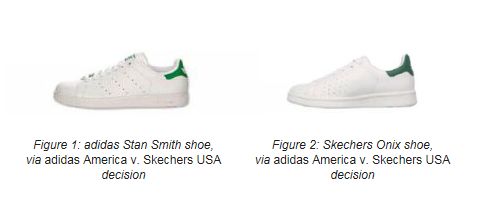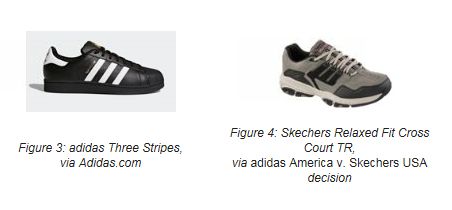California trademark attorneys have been waiting five years to get clarification on the requirements for injunctive relief and hoped that a new case between adidas and Skechers would provide that guidance. The U.S. Court of Appeals for the Ninth Circuit has now spoken, and while some aspects remain uncertain, the situation is clearer than it was under the court's 2013 Herb Reed Enterprises v. Florida Entertainment Management decision.
In Herb Reed, the Ninth Circuit held that the district court abused its discretion in finding that the plaintiff suffered irreparable harm where it relied on "conclusory statements" rather than evidence about the loss of control over business reputation and damage to goodwill. Instead of allowing a presumption of irreparable harm, Herb Reed held that "[t]hose seeking injunctive relief must proffer evidence sufficient to establish a likelihood of irreparable harm."
In adidas America v. Skechers USA, the Ninth Circuit clarified that "concrete evidence" is needed, and, while not defining that term, provided examples of what is and what is not such evidence. The court held that the district court did not abuse its discretion in issuing a preliminary injunction on sales of Skechers' Onix sneakers for infringement of adidas' Stan Smith shoe, after finding that adidas presented sufficient evidence of likelihood of success on the merits and irreparable harm.

For success on the merits, the court found it to be significant that Skechers placed metatags on its website that directed consumers who searched for the Stan Smith shoe to its Onix shoe. It agreed with the district court that the only reason such a term would be useful would be to associate the term with adidas's distinctive shoe. To prove irreparable harm, adidas provided evidence of the company's targeted advertising strategy, the shoe's unsolicited media attention and consumer surveys showing that 20 percent of those surveyed believed Skechers' Onix was made by or affiliated with adidas.
But the Ninth Circuit held that the district court was clearly erroneous in issuing an injunction over Skechers' infringement of adidas' registered three-stripe mark in its Cross Court shoe.

Although the court held that the district court did not err in finding a likelihood of success on the merits for adidas's trademark infringement or dilution claims, it found that there was no evidence in the record that supported a finding of irreparable harm based on a loss of control theory. Specifically, the court found that testimony from adidas's employees was insufficient to show that consumers believed Skechers made lower quality products, and there was no evidence that post-sale confusion about the Cross Court's maker would cause adidas irreparable harm.
As the court repeated, now the only sufficient evidence for injunctive relief is "concrete evidence." While what constitutes concrete evidence has not been outlined, the case does provide clues. Rather than relying on statements from employees, companies seeking injunctive relief in a trademark dispute should conduct a consumer survey or gather any other external evidence of public recognition of the good or customer confusion. The court refused to assume irreparable harm when the plaintiff failed to provide evidence that consumers would be confused even if the court believed they would be. adidas may not have provided the clear answers sought by some, but it does provide more guidance on the Ninth Circuit's evidentiary standard for injunctive relief in a trademark dispute.
The content of this article is intended to provide a general guide to the subject matter. Specialist advice should be sought about your specific circumstances.
